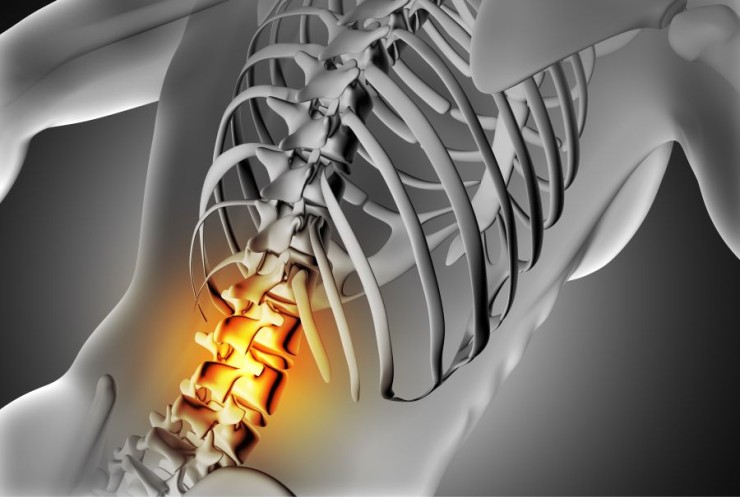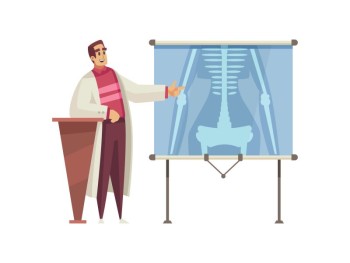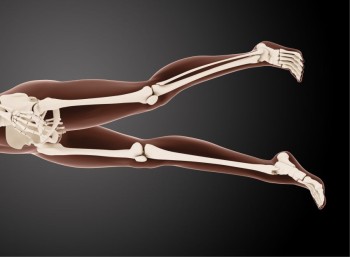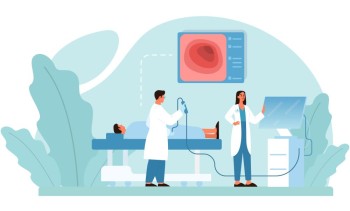
Lumbar spine X-rays, specifically the Anteroposterior (AP) and Lateral (Lat) views, are invaluable diagnostic tools used to evaluate the lower back's vertebrae.
Lumbar Spine X-ray AP and LAT View with Cost
Decoding Lumbar Spine X-ray: Unveiling the AP &
Lat Views
Introduction
Lumbar spine X-rays, specifically the Anteroposterior (AP) and Lateral (Lat) views, are invaluable diagnostic tools used to evaluate the lower back's vertebrae. This detailed guide aims to explore the purpose, preparation, and interpretation of lumbar spine X-rays, shedding light on their significance in diagnosing various spinal conditions.
Purpose of Lumbar Spine
X-rays
Lumbar spine X-rays serve a crucial role in diagnosing and assessing conditions affecting the lower back, such as degenerative disc disease, fractures, or structural abnormalities. Understanding the purpose behind these X-rays is essential for both healthcare professionals and patients.
Preparation for the X-ray
Proper patient preparation is key to obtaining accurate lumbar spine X-rays. This involves precise positioning of the patient to capture detailed images of the lumbar vertebrae. Radiographers ensure that the patient is comfortable and compliant with the required positioning.
Understanding AP Views
Positioning and Technique
In Anteroposterior views, the patient faces the X-ray source while standing or lying down. This frontal perspective captures the lumbar spine's alignment, vertebral bodies, and surrounding structures.
Key Details Captured
AP views reveal crucial information, including the intervertebral disc spaces, joint spaces, and the overall alignment of the lumbar spine. These details are instrumental in identifying abnormalities or degenerative changes.
Interpretation of AP Views
Radiologists analyze AP views to distinguish normal from abnormal findings. Conditions such as disc herniation, spondylolisthesis, or osteoarthritis become apparent through careful examination of these frontal images.
Significance of Lat Views
Positioning and Technique
In Lateral views, the patient stands or lies sideways to the X-ray source. This side perspective provides additional insights into the lumbar spine's structure, including the vertebral bodies, intervertebral spaces, and the curvature of the spine.
Advantages in Diagnosis
Lat views are particularly useful in detecting conditions like fractures, assessing spinal curvature abnormalities, and identifying issues such as scoliosis or kyphosis.
Analyzing Lat Views
Healthcare providers carefully analyze lateral perspectives to gain a comprehensive understanding of the lumbar spine's health. Abnormalities in vertebral alignment, disc spaces, and potential compression on nerve roots become evident through the examination of lateral X-rays.
When Lumbar Spine X-rays
are Recommended
Lumbar spine X-rays are recommended in various medical scenarios, including:
Chronic
lower back pain
Suspected fractures or injuries
Preoperative assessments for spinal surgeries
These X-rays play a crucial role in guiding treatment decisions and formulating effective management plans.
Safety Measures During Lumbar Spine X-rays
Acknowledging concerns about radiation exposure, safety measures are implemented during lumbar spine X-rays. These include minimizing radiation dosage, using lead shielding, and ensuring patient comfort throughout the procedure.
Comparison with Other Diagnostic Tools
While lumbar spine X-rays provide valuable insights, they are part of a comprehensive diagnostic approach. Comparisons with Magnetic Resonance Imaging (MRI) and Computed Tomography (CT) scans help healthcare professionals choose the most suitable imaging modality for specific clinical situations.
Role in Injury Assessment
In cases of lumbar trauma or injury, X-rays are crucial in assessing the extent of damage. Detecting fractures, dislocations, and identifying potential nerve compression are vital steps in formulating an effective treatment plan.
Common Challenges in Interpretation
Interpreting lumbar spine X-rays comes with challenges, including issues like overlapping structures or variations in patient anatomy. However, advancements in technology and expertise in radiology help overcome these challenges.
Future Developments in Lumbar Imaging
As medical imaging technology evolves, the future promises improvements in diagnostic accuracy for lumbar spine conditions. Ongoing research and advancements aim to enhance the specificity and sensitivity of these diagnostic tools.
Patient Experience and Feedback
Understanding the patient's perspective is essential. Sharing real-life experiences and patient testimonials can alleviate concerns and demystify the process of undergoing lumbar spine X-rays. Creating a patient-friendly environment contributes to a positive healthcare journey.
Conclusion
In conclusion, lumbar spine X-rays, especially the AP and Lat views, are integral in diagnosing and assessing conditions affecting the lower back. From detecting fractures to guiding surgical interventions, these imaging techniques provide crucial information for healthcare professionals. Advancements in technology continue to enhance diagnostic accuracy, offering hope for improved patient outcomes.
FAQs (Frequently Asked Questions)
Is it necessary to remove clothing for a lumbar spine X-ray?
In most cases, patients may need to remove clothing covering the lower back to ensure clear imaging. A hospital gown is usually provided for modesty.
Can lumbar spine X-rays detect nerve-related issues such as sciatica?
Lumbar spine X-rays primarily capture bone structures, but indirect signs of nerve-related issues may be visible, prompting further investigation with additional tests if needed.
How long does a lumbar spine X-ray procedure take?
The procedure is relatively quick, usually lasting 10 to 20 minutes, depending on the complexity of the imaging required.
Are there any age limitations for lumbar spine X-rays?
Lumbar spine X-rays can be performed at any age, and there's no specific age limitation. The necessity is determined based on clinical indications.
Can lumbar spine X-rays detect conditions like spinal tumors?
Lumbar spine X-rays primarily focus on bone structures. However, they may indicate abnormalities or changes that could prompt further investigation with advanced imaging techniques for a more detailed assessment.
Are lumbar spine X-rays safe during pregnancy?
While X-rays involve minimal radiation, pregnant individuals should inform their healthcare provider before undergoing lumbar spine X-rays. Necessary precautions will be taken to minimize exposure.
How often are lumbar spine X-rays recommended for chronic conditions?
The frequency of lumbar spine X-rays depends on the specific condition and the treatment plan. Healthcare providers typically order X-rays as needed for diagnostic or monitoring purposes.
Can lumbar spine X-rays diagnose osteoporosis?
While lumbar spine X-rays can reveal signs of bone density loss, they are not the primary tool for diagnosing osteoporosis. Dual-energy X-ray absorptiometry (DEXA) scans are more specific for assessing bone density.
Is sedation required for children undergoing lumbar spine X-rays?
In most cases, sedation is not necessary for children undergoing lumbar spine X-rays. The procedure is quick, and children are usually able to cooperate without sedation.
Can lumbar spine X-rays detect herniated discs?
Lumbar spine X-rays primarily show bone structures, and herniated discs may not be clearly visible. Advanced imaging techniques like MRI are more effective in diagnosing disc-related issues.
What should I do if I am claustrophobic during a lumbar spine X-ray?
Inform the healthcare provider about your claustrophobia before the procedure. They can offer support and guidance to make the experience more comfortable. Lumbar spine X-rays are typically open and do not involve confinement.
Can lumbar spine X-rays be performed on individuals with metal implants?
Yes, lumbar spine X-rays can be performed on individuals with metal implants. However, inform the healthcare provider about any implants or metal objects in your body to ensure safety and accurate imaging.
Do lumbar spine X-rays require any special diet preparation?
Generally, lumbar spine X-rays do not require special diet preparation. Patients are usually instructed to eat and drink normally unless advised otherwise by their healthcare provider.
Can lumbar spine X-rays be done in emergency situations?
Yes, lumbar spine X-rays can be performed in emergency situations to quickly assess and diagnose injuries or conditions affecting the lower back.
(0)
Login to continue



